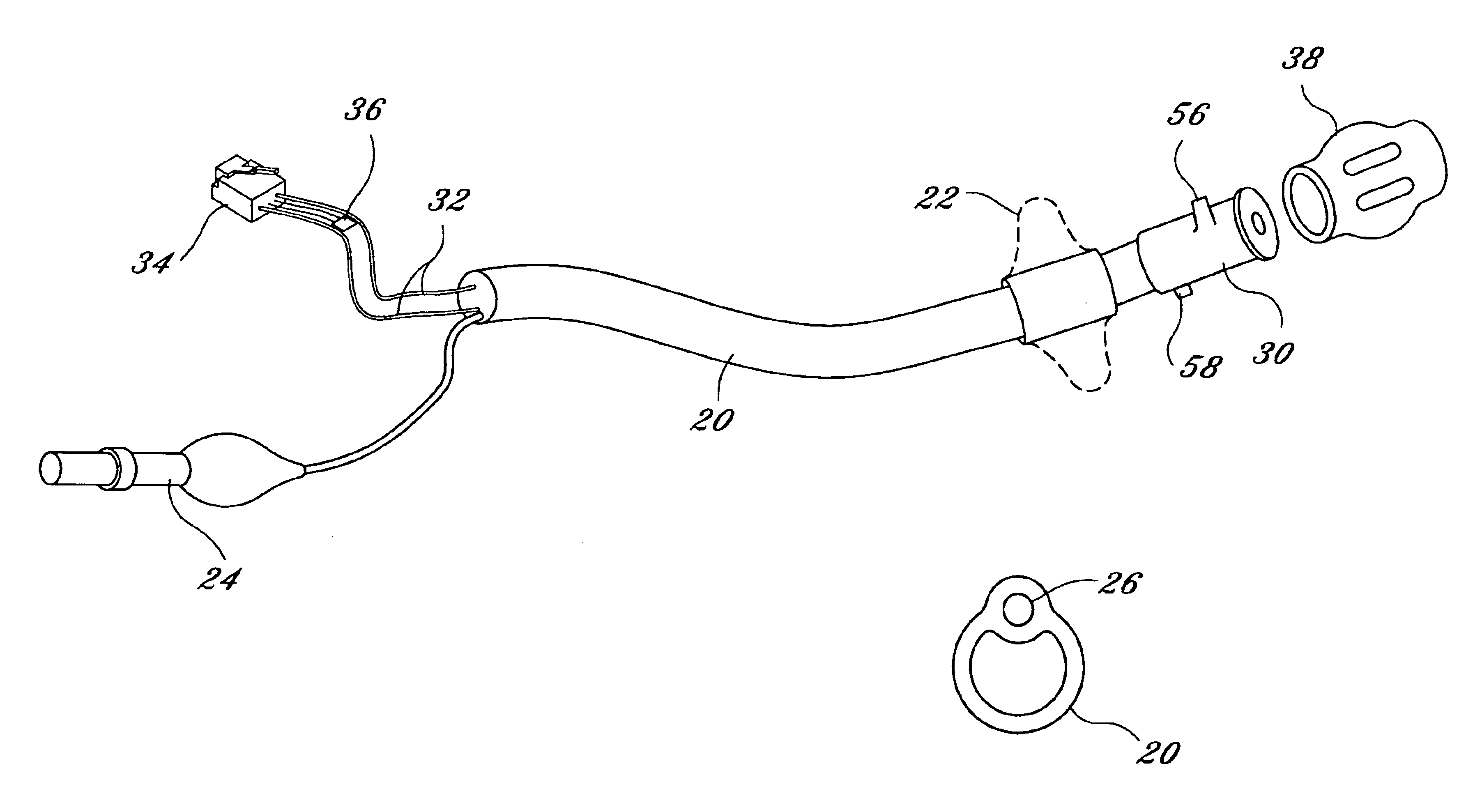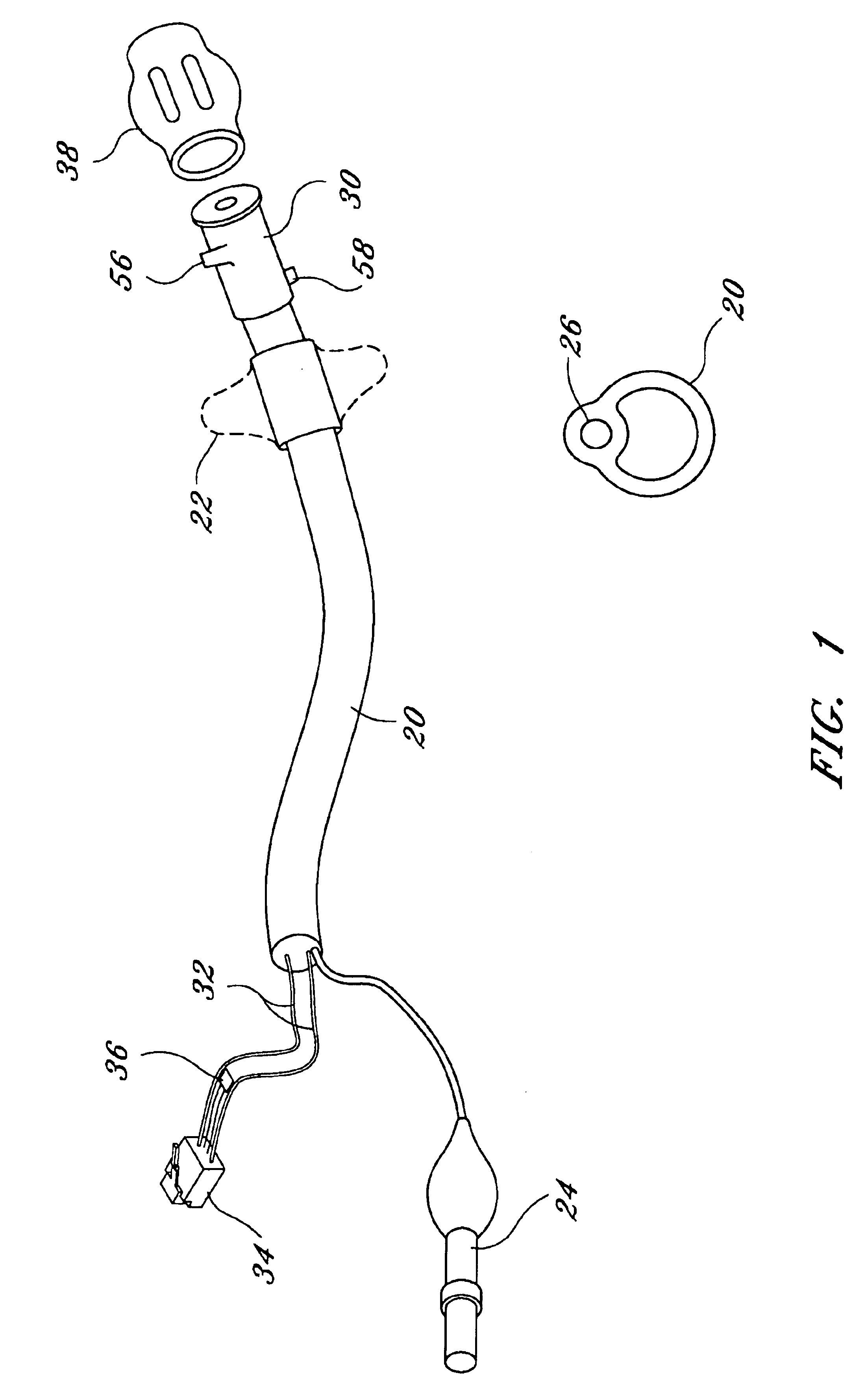Fecal incontinence management device
a management device and fecal incontinence technology, applied in the field of fecal incontinence management devices, can solve the problems of fecal material contamination risk, high labor cost associated with fecal waste disposal, and distressing symptoms of patients and nursing personnel, so as to reduce the occurrence of false alarms, reduce the sensitivity of alarms, and reduce the effect of seepage around the balloon
- Summary
- Abstract
- Description
- Claims
- Application Information
AI Technical Summary
Benefits of technology
Problems solved by technology
Method used
Image
Examples
Embodiment Construction
The present invention is an apparatus and method for managing fecal incontinence. The invention comprises use of a dual lumen catheter with a balloon attached near the distal end. The distal end of the catheter is inserted into the anus in a deflated condition and once resident in the rectum it is inflated to a size that blocks the passage of stool, serving the same function as the sphincter. In the tip of the catheter are two electrodes. When a moisture path is in place across these electrodes (indicative of feces impinging onto the sensor) an electrical conduction takes place that can be sensed in an attached alarm unit, thereby alerting the user to the need to evacuate the bowels. Since the electrodes are easily cleaned, the catheter may be reused multiple times. For ambulatory patients, the mechanical barrier created by the inflated balloon allows the user sufficient time to reach a toilet, thus precluding an unintended passage of stool. Voluntary evacuation is accomplished afte...
PUM
 Login to View More
Login to View More Abstract
Description
Claims
Application Information
 Login to View More
Login to View More - R&D
- Intellectual Property
- Life Sciences
- Materials
- Tech Scout
- Unparalleled Data Quality
- Higher Quality Content
- 60% Fewer Hallucinations
Browse by: Latest US Patents, China's latest patents, Technical Efficacy Thesaurus, Application Domain, Technology Topic, Popular Technical Reports.
© 2025 PatSnap. All rights reserved.Legal|Privacy policy|Modern Slavery Act Transparency Statement|Sitemap|About US| Contact US: help@patsnap.com



